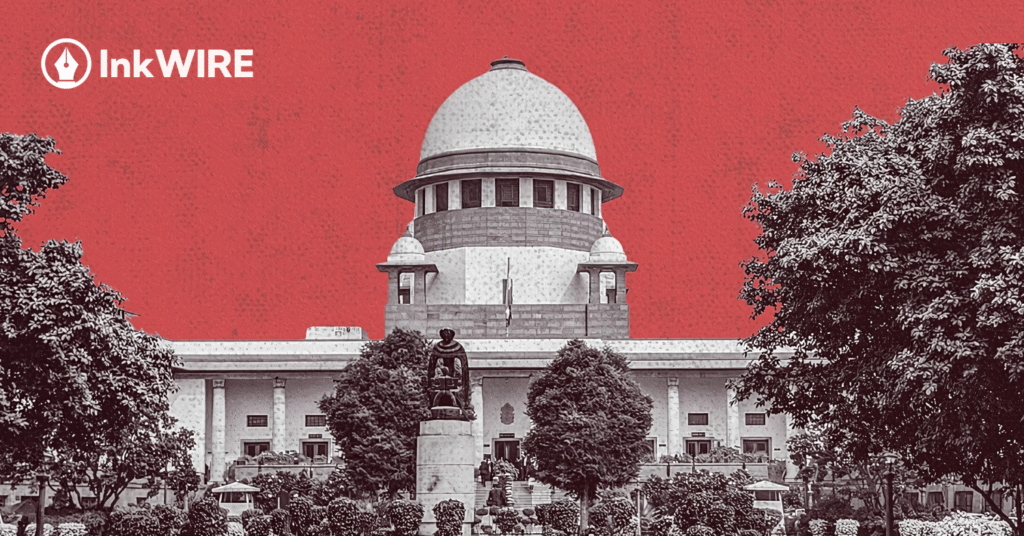
States challenge presidential move as hidden appeal. Supreme Court sets hearing today.
Background of the Dispute
Tamil Nadu and Kerala take bold steps. They urge the Supreme Court to reject a presidential reference. This reference questions timelines for bill approvals.
The issue starts with governors’ delays. States face hurdles in passing laws. Governors hold back assent too long.
In April 2025, the Supreme Court rules firmly. It sets clear timelines for actions. Governors must act within three months.
President Droupadi Murmu sends a reference in May. She asks 14 questions on bill processes. The reference ignores the recent judgment.
Tamil Nadu files an application quickly. It calls the reference not maintainable. The state sees it as an appeal in disguise.
Kerala joins the fight. It argues the reference misleads the court. The state points out suppressed facts.
Both states highlight Article 143 limits. Presidents can refer undecided questions only. Yet, the court already decided these issues.
Transition words guide the story. For instance, however, the Union government pushes back. It defends the reference as necessary.
Moreover, the Supreme Court schedules hearings. Arguments begin on August 19, 2025. Opposing sides speak first.
Key Arguments from Tamil Nadu
Tamil Nadu leads the charge. The state recalls its April victory. The court deemed bills assented illegally withheld.
Governor R.N. Ravi reserves 10 bills wrongly. The Supreme Court voids those actions. It uses Article 142 powers.
Now, the presidential reference emerges. It seeks clarity on timelines. But Tamil Nadu spots a ploy.
The state argues no new questions arise. All issues settle in prior rulings. Therefore, the reference deserves dismissal.
In its application, Tamil Nadu states clearly. “The reference tries to unsettle settled principles.” This quote captures their stance.
Furthermore, the state notes missing reviews. The Centre files no review petition. Instead, it chooses this indirect path.
Tamil Nadu warns of misuse. Article 143 serves advice, not appeals. Allowing this sets bad precedents.
Additionally, the state references past cases. Telangana and Punjab win similar fights. Governors must act soon.
Kerala’s Strong Opposition
Kerala echoes Tamil Nadu’s views. The state files its plea urgently. It urges outright rejection.
Advocate C.K. Sasi represents Kerala. He argues the reference suppresses judgments. “It misleads the court into inconsistency,” he says.
Kerala points to Article 200. It requires action “as soon as possible.” The court affirms this thrice.
Yet, the reference claims no timelines exist. Kerala calls this erroneous. Thus, the entire reference fails.hindustantimes
Senior advocate K.K. Venugopal speaks for Kerala. He questions maintainability directly. “Return it unanswered,” he demands.thewire
Moreover, Kerala withdraws a related appeal. It focuses on this reference now. The move shows strategy.
Both states unite against the Centre. They see federalism at stake. Governors’ delays harm state powers.
Presidential Reference Details
President Murmu poses 14 questions. They cover governor options under Article 200. Options include assent, withholding, or reservation.
The reference assumes no timelines. It cites polycentric considerations. Federalism and security factor in.
However, the Supreme Court disagrees earlier. It mandates prompt actions. Delays violate the Constitution.
The reference avoids mentioning the April judgment. Critics call this suppression. It weakens legitimacy.
Furthermore, it raises justiciability issues. Can courts review presidential assent? Conflicting views exist, it claims.
States counter this. They say Article 32 suits federal disputes. Original suits under 131 fit less.
Additionally, the reference questions Article 142. Deeming assent seems alien, it argues. Yet, the court uses it validly.scobserver
Supreme Court’s Response
A five-judge bench assembles. Chief Justice B.R. Gavai leads. They issue notices to all parties.
The court sets a tight schedule. Opponents argue on August 19-21 and 26. Supporters follow in September.
“We start hearing on August 19,” the bench states. Parties must file submissions by August 12.
This hearing draws attention. It tests advisory jurisdiction limits. Outcomes affect centre-state relations.
Moreover, the bench appoints nodal counsels. Misha Rohatgi handles opponents. Efficiency guides the process.
Implications for Federalism
This dispute highlights tensions. States fight for autonomy. Governors often align with the Centre.
Delays stall key reforms. Education, health, and reservations suffer. Tamil Nadu’s bills cover vital areas.
Kerala faces similar issues. Eight bills pend for years. The state withdraws its plea strategically.hindustantimes
If the court rejects the reference, precedents strengthen. Governors face stricter timelines. Accountability rises.
However, acceptance could dilute the April ruling. It might allow indefinite holds. States fear this outcome.
Furthermore, legal experts watch closely. “This tests constitutional boundaries,” one analyst notes.
Transitioning to broader impacts, democracy benefits from clarity. Swift bill actions ensure governance flows.
Historical Context
Past cases shape this narrative. Telangana sues its governor in 2023. The court mandates quick decisions.
Punjab follows suit. Similar rulings emerge. Governors cannot sit on bills forever.
Tamil Nadu’s April win builds on these. It deems assent after long delays. A bold use of Article 142.
Now, the reference challenges this chain. States see it as an attempt to contradict.
Moreover, the Cauvery dispute reference from 1993 guides. It shows limits on advisory powers.
Kerala invokes this. “Only undecided questions qualify,” it argues. Suppressed judgments invalidate the move.
Union’s Stance
The Centre defends vigorously. It submits written arguments. The reference seeks genuine clarity.
Officials claim no suppression. Questions arise from prevailing circumstances. Public importance demands answers.
However, states disagree. They call it an oblique challenge. Review petitions offer the proper route.
Additionally, the Union avoids direct confrontation. It frames issues as doubts. Yet, timing raises suspicions.
The reference follows the Tamil Nadu judgment closely. Only a month separates them.
Expert Opinions
Legal scholars weigh in. Some support states’ views. “This misuses Article 143,” one expert says.
Others see merit in clarification. “Conflicting judgments need resolution,” they argue.
Transition words connect ideas. For example, therefore, the hearing becomes crucial.
Public interest grows. Media covers the story widely. Citizens follow centre-state dynamics.
Potential Outcomes
The bench might return the reference. If so, the April judgment stands firm.
Alternatively, it could answer questions. This might refine timelines. But states worry about dilutions.
Moreover, rejection boosts state powers. It curbs gubernatorial overreach.
However, answers favoring the Centre could centralize control. Federal balance shifts.
In any case, the decision influences future disputes. Kerala and Tamil Nadu prepare for all scenarios.
Conclusion and Future Watch
Tamil Nadu and Kerala stand united. They question the reference’s intent. Is it a ploy to contradict the court?
The Supreme Court hears arguments today. Outcomes shape India’s federal structure.
Stay tuned for updates. This story evolves rapidly. Democracy demands vigilant oversight.





